Living With a GMC Hummer EV: 5 Things You Need to Know

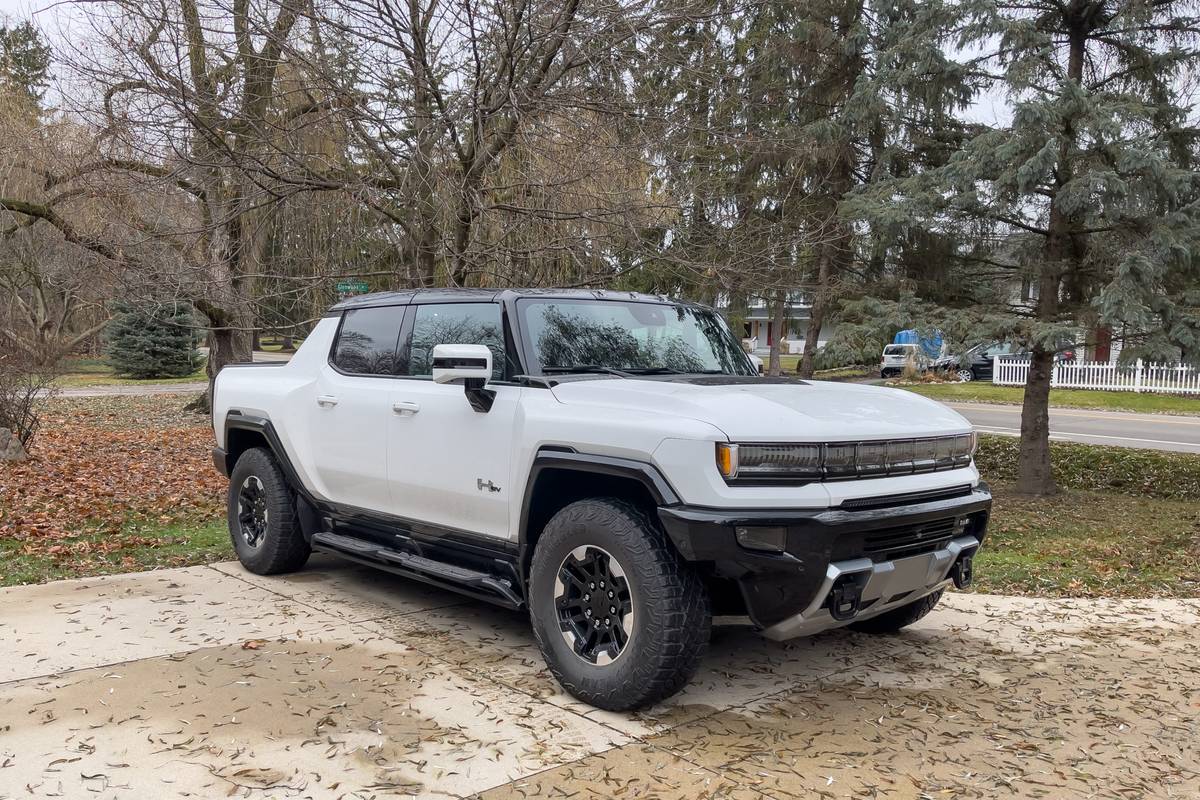
It’s been a few months now since my first spin behind the wheel of GM’s all-new GMC Hummer EV pickup truck, when I took the mind-blowing electric behemoth off-roading in the dusty scrub of the Arizona desert. On that drive, I found it to be a technological powerhouse chock-full of so many firsts and so much brain-bending technology for both on- and off-road driving that I knew I simply had to get a lot more seat time in the thing to fully understand what it was GM had created.
Related: 2023 GMC Hummer EV Pickup Review: Awesome in Nearly Every Way
My shot finally arrived over the long Thanksgiving break, so I put the new pickup through its paces as it’s most likely to be used: not as the ultimate off-roading machine (a vehicle this expensive is almost certainly not going to be seeing much trail time with its owners regardless of what GM’s designed it to do), but as a family car, grocery getter, commuter, errand runner, highway cruiser and equipment hauler — essentially, how most pickup owners use their conventionally powered, super-expensive, luxury-trimmed trucks.
Here are the five things I learned from my time with it:

1. It Gets Dirty in Weird Ways
The Hummer EV arrived in my driveway pristine and glistening in its bright white paint, the color that all Edition 1 models come in (unfortunately). While it’s definitely attention-grabbing, it’s not really the color I’d choose for this thing. But perhaps the most surprising aspect to the in-your-face bodywork is what happened after we got about an inch of snow and I took it to the market: It got filthy fast. It wasn’t 2 miles round trip to the store and back, and when it returned to my driveway, it was slushy and dirty in all the wrong places — the door sills and sticky-outie rear fenders, as well as the door handles and headlights. Blame the big off-road tires for this one; they throw all the slush and muck up over the body sides with nothing impeding the flow of gunk.

2. It’s Terrible on Ice and Snow
There are two off-pavement modes in the Hummer EV, Off-Road and Terrain, selectable using the mode selector wheel on the center console. But there’s no ice-and-snow mode, which becomes evident when you try to drive it in subzero temperatures on icy, slippery blacktop. It’s clear the Hummer EV is really meant to be a warm-weather creature; it doesn’t like being in the cold. That’s partially due to its tire selection: absolutely massive 35-inch Goodyear Wrangler Territory Mud/Terrain rubber. The tires are tremendous on rocks, dust and mud, but being mud/terrain-style tires, they don’t have much in the way of tread for slippery pavement.
If you plan on using your Hummer EV in snowy climates, I’d suggest swapping out those standard tires for some Goodyear Wrangler DuraTracs instead; they work much better on slippery pavement but still feature excellent off-road traction. (They’re quieter on the highway, too.)

3. It’s Both Ridiculously Easy and Totally Impossible to Park
Perhaps the most truly exceptional feature of the GMC Hummer EV is its four-wheel steering. This is a big opinion when discussing a truck that GMC says can do 0-60 mph in 3.3 seconds, employs three electric motors making 1,000 horsepower total, has a battery that’s nearly twice the capacity of most other EVs on the market, has four removable transparent roof panels and can scale objects 18 inches tall. I should also mention the CrabWalk feature, the setting that lets all four wheels turn in the same direction, allowing you to do some strange maneuvering around theoretical boulders in your path; however, I’ve yet to find a legitimate, real-world use for this feature other than making jaws drop at the local cars and coffee.
No, it’s truly the four-wheel steering that makes this gargantuan, 9,000-pound monster truck actually easy to live with on a daily basis. It makes the Hummer EV incredibly maneuverable, whether negotiating tight parking lots, pulling a U-turn on a two-lane road without needing a three-point turn, or driving through downtown city streets and parking garages. It makes you wish all pickups and large SUVs had this feature, so transformative is it in your ability to park and drive the thing …

… Until you get home and try to pull it into your garage. While it drives like a smaller, lighter truck (for the most part; braking sometimes takes planning), at the end of the day, it’s still absolutely massive. The Hummer EV pickup is more than 7 feet wide and 18 feet long; that’s roughly 7 inches longer than a regular-length GMC Yukon full-size SUV. As you can see, pulling it into my home carport to charge the thing was … well, it mostly fit, I suppose. Height isn’t an issue since the truck can easily lower itself thanks to a standard adaptive air suspension, but it’s going to stick its butt out in parking lots and home garages, and God help you if you think you’re going to find a place to parallel park it (although it does have automatic parallel parking, so if you do find a space big enough, it’ll squeeze in without much effort on your part).
4. Charging Is a Challenge — in Many Ways
Charging the Hummer EV can be a challenge for a few different reasons. The first issue is the battery size, which GMC still hasn’t truly come clean about in terms of capacity. Most sources cite it as a 212.7-kilowatt-hour battery made up of 24 of GM’s new Ultium lithium-ion battery modules. That’s an enormous battery, the biggest one yet put to pavement in any mass-produced vehicle, with the next-largest one being the Ford F-150 Lightning’s optional 131-kWh battery.
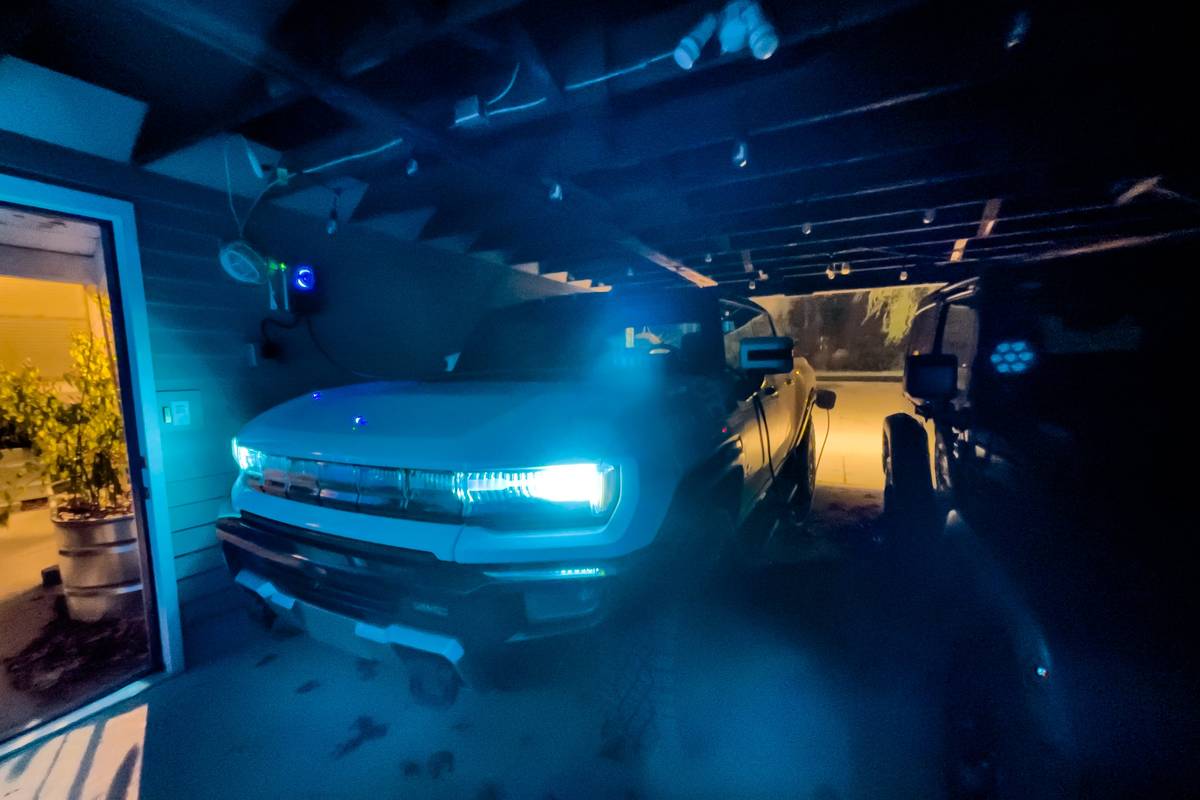
Charging the Hummer EV’s battery can be done one of three ways: on a 120-volt household circuit (which will take you days and isn’t a realistic home-charging solution for this vehicle), on a Level 2 home charger (which will take a GMC-estimated 16.5 hours at 48 amps to charge from 20% to 100%) or on a public DC fast charger at 400/800 volts at speeds theoretically up to 350 kilowatts. Charging the Hummer EV at that maximum rate should allow you to add nearly 100 miles in 10 minutes, according to GMC. But getting the truck to charge at its maximum rate can be a challenge for several reasons.
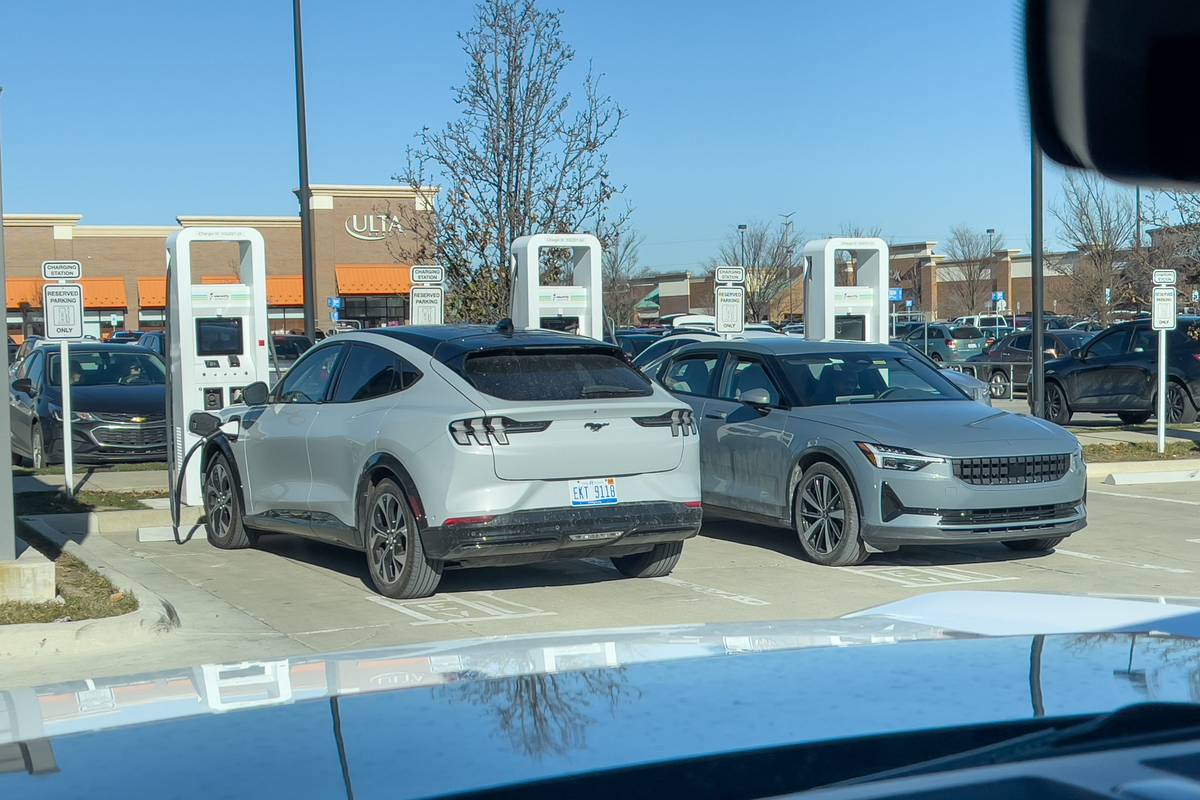
First, finding a functioning 350-kW charger can be tricky. Many of the fast chargers out there right now from charging networks like Electrify America simply don’t work or aren’t operating at this high of a level because they’re older equipment. Then there are EV owners with cars that can’t actually use 350-kW chargers because their cars aren’t able to handle that speed (see pic above) but who are still plugging into them because they apparently don’t know any better, making you wait until they’re done for you to have a go at it. (Charger etiquette, people, please learn it.)
Then there’s the Hummer EV’s vehicle-side issues. In order to charge at 350 kW, your starting state of charge has to be at a very specific level, your battery has to be at a very specific temperature, the battery needs to have been preconditioned, the ambient temperature needs to be at a certain spot — the list goes on. GM is apparently extremely conservative with its battery management when it comes to fast charging in order to preserve battery longevity, and that means being able to charge a Hummer EV at 350 kW is unlikely unless the stars align just right.
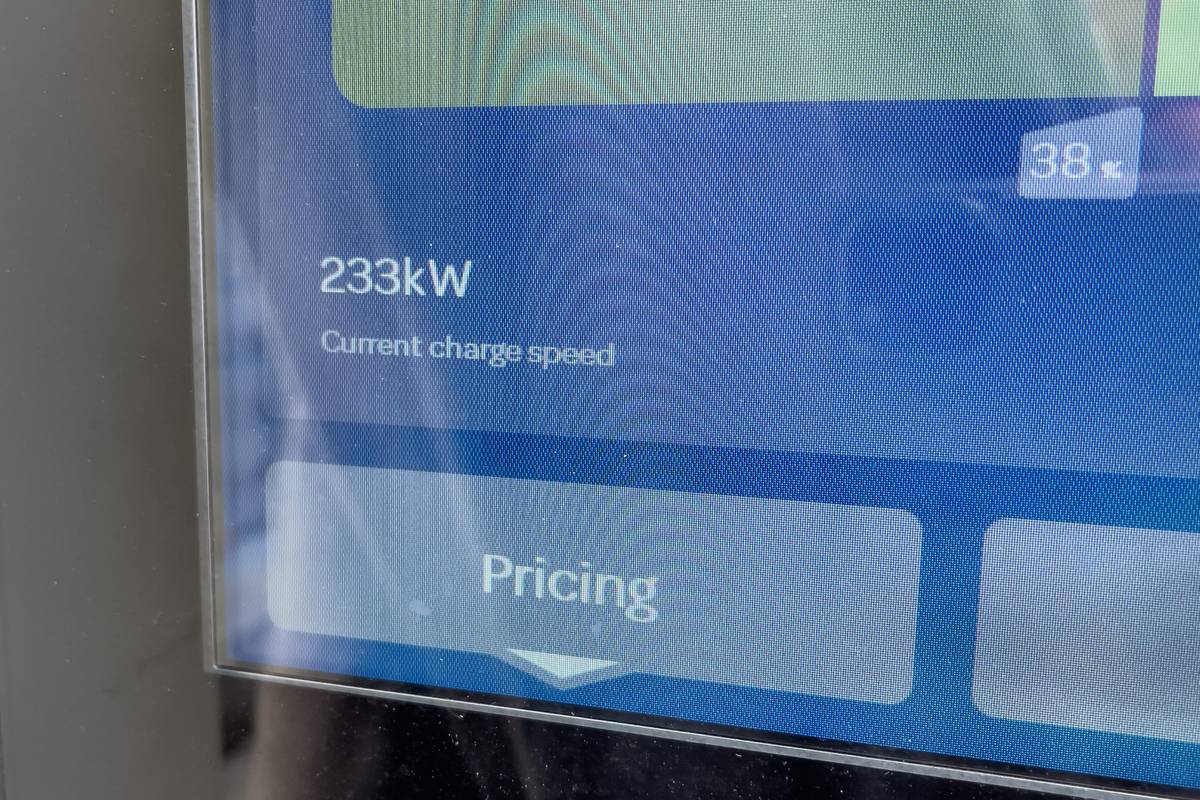
When I showed up to an Electrify America 350-kW DC fast charger, the battery preconditioning function had been running for over an hour and it still hadn’t told me it was ready, the state of charge was 38% to start, and the outside temperature was about 55 degrees. The maximum charging rate I saw during my charging session was a brief stint at 233 kW (still decent, but not as good as it could be), which quick-charged the Hummer EV from 38% to 80% in 39 minutes, adding 95 kWh of energy and about 140 miles of range at a cost of nearly $43 with taxes. That’s a little on the pricey side at $0.43 per kWh, but this type of charging is meant to be an occasional event to keep you going; most charging should happen at home, where electric rates are significantly cheaper.

But charging at home also has its challenges due largely to the boneheaded placement of the Hummer EV’s charge port. It’s on the driver-side pickup bed fender aft of the rear tire. It’s practically an impossible place to reach with a charging cord as you either have to back the truck into a charging spot (as I did at the public DC fast charger) or already have a super-lengthy home charge cord that you may have to drape over the truck depending on where the charger is located. Why it’s not in the grille or on a front fender is beyond me.
More From Cars.com:
- 2022 GMC Hummer EV Pickup Quick Spin: An Untimely Collection of Excellent Thinking
- 2022 GMC Hummer EV Pickup: 7 Things We Like and 3 We Don’t
- 2024 GMC Hummer EV SUV Revealed, Goes on Sale in 2023
- 3 Things to Know About the 2022 GMC Hummer EV Pickup Truck
- Electric Hummer Performance Specs Are Out … and They’re Bonkers
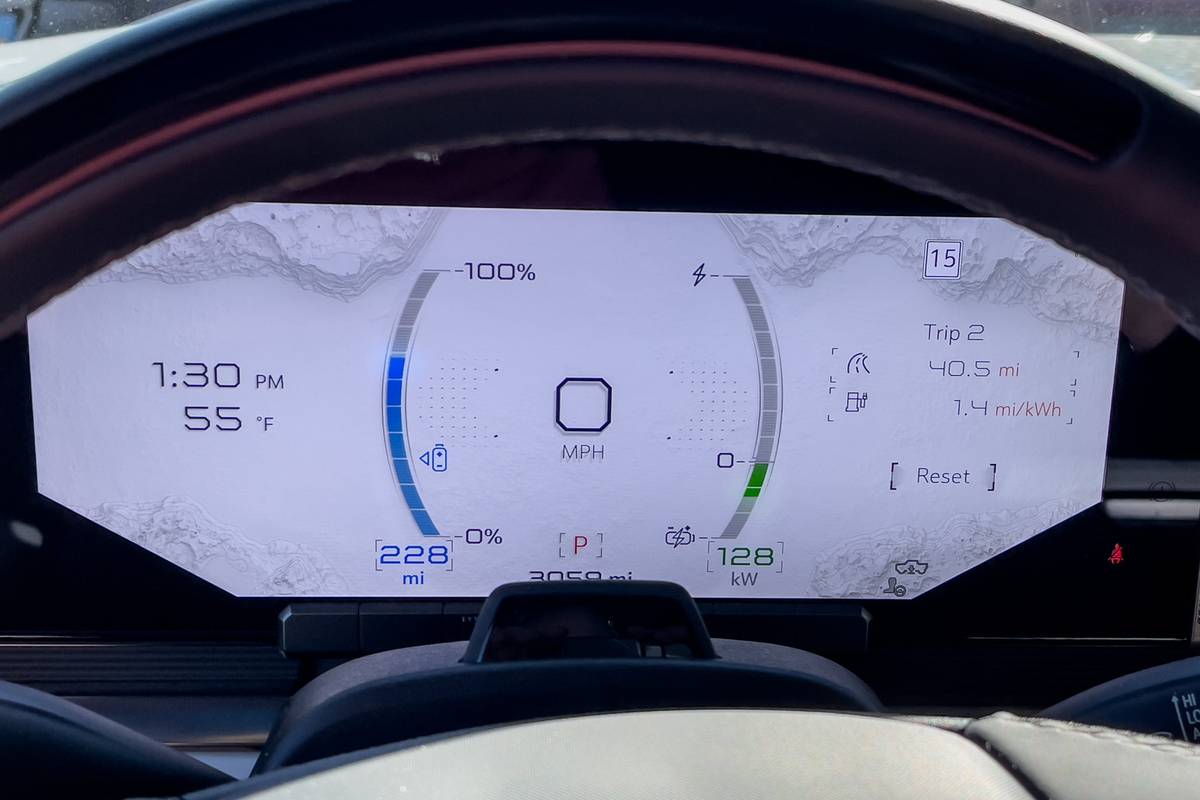
5. It’s Horribly Inefficient — But You Really Won’t Care
After driving and using the Hummer EV, you start to understand why it has an enormous battery capacity: It needs it just to function. The truck is extraordinarily heavy thanks both to the huge battery and its off-road bits and structure. It weighs more than 9,000 pounds, which is more than a maxed-out heavy-duty 1-ton dually diesel pickup like the GMC Sierra 3500. Despite that huge battery, its advertised range is 329 miles on a charge. In comparison, an all-aluminum Ford F-150 Lightning with the 131-kWh battery pack has an EPA-estimated 320 miles of range. If the Ford had a battery as big as the Hummer EV’s, it could potentially have a range into the 400- or even 500-mile strata. But the Hummer EV is simply crazy inefficient — and that’s OK. Hear me out on this one.
The metric most EV-making automakers are starting to use when talking about efficiency is miles per kWh, which makes sense. Much like mpg, which tells you how many miles you can go based on a gallon of gas and allows you to extrapolate your total potential range based on how many gallons your tank can hold, miles per kWh is similar: Your battery has a certain kWh capacity, so how many miles you can travel on each kWh is a decent way to measure efficiency and estimate range.
Some of the best EVs on the market can do more than 3.5 miles per kWh; I’ve seen it in a number of the Mercedes-EQ and Hyundai group vehicles. The Hummer EV, during its week with me and over the course of about 500 miles, averaged just 1.1 miles per kWh. That would give it a theoretical range of just 234 miles, not the 329 miles GMC advertises.
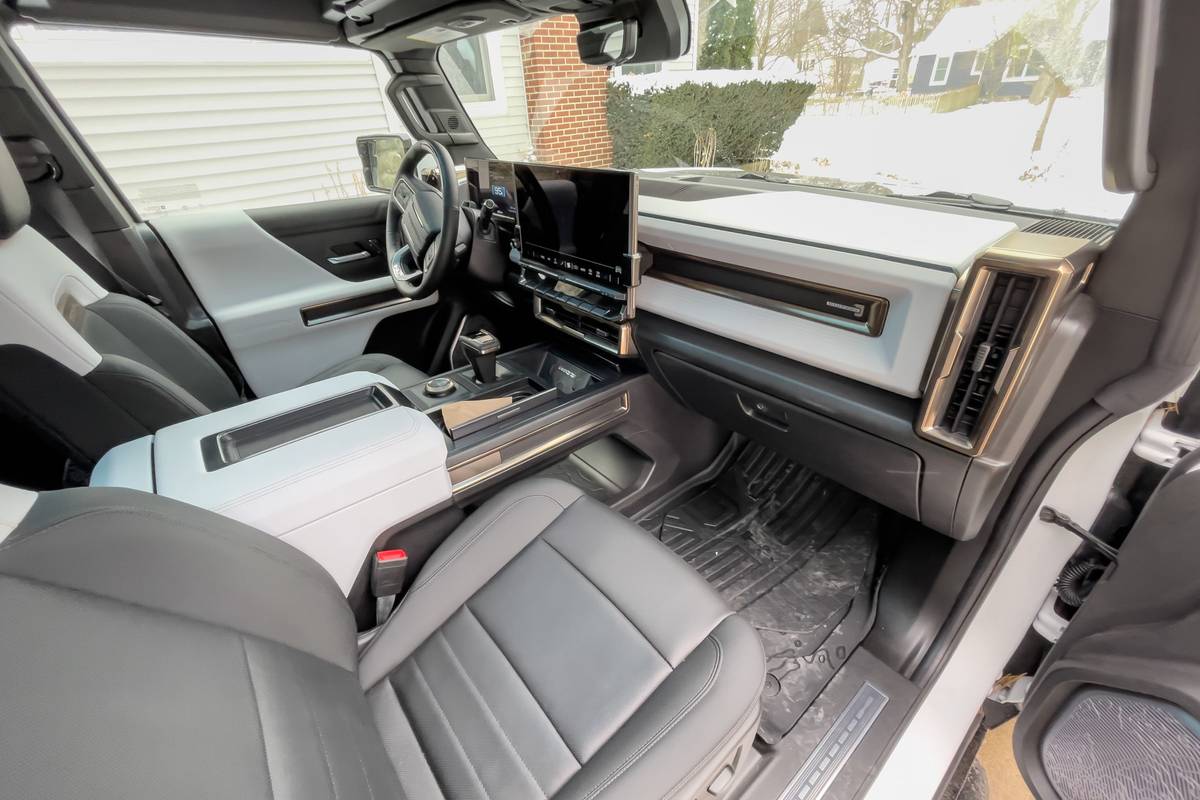
Now, there were some extenuating circumstances here that make this more understandable. It was late November in Michigan, meaning the heat was always on. I did a lot of highway driving at 75 mph or more, and given the Hummer EV’s blatant nose-thumbing at aerodynamic efficiency, it’s clear that long, fast highway jaunts are not its happy place when it comes to efficiency. Frankly, at this rate, the Hummer EV doesn’t really feel any more efficient than the old V-8-powered Hummer H2, but whereas the gas Hummer could easily cost you well over $100 to fill up these days, you can fill up a Hummer EV on a home charger for about $45-50. That’s because its battery pack capacity is equivalent to about 6 gallons of gas.
So no, the Hummer EV’s mass, shape and mission mean it’s simply not efficient — and that’s actually OK, as efficiency isn’t its goal. Being a technology showcase, an in-your-face roadgoing Rylan Gunstar space fighter, a truck that makes coal-rollin’ diesel brodozer drivers give you death stares — that’s its mission. It lets GM show that EVs don’t have to just be super-efficient bubble-shaped commuter cars, but that they can also be bad-ass, road-rompin’, skull-crushin’, swamp-stompin’ monster trucks, and isn’t that cool, truck owners? The Hummer EV succeeds in its mission in spectacular fashion. There is absolutely nothing else like it on the road today, and when you consider the Hummer EV’s level of sheer obnoxiousness, it’s highly unlikely anyone is developing something that’ll one-up it.
Related Video:
Cars.com’s Editorial department is your source for automotive news and reviews. In line with Cars.com’s long-standing ethics policy, editors and reviewers don’t accept gifts or free trips from automakers. The Editorial department is independent of Cars.com’s advertising, sales and sponsored content departments.

Detroit Bureau Chief Aaron Bragman has had over 25 years of experience in the auto industry as a journalist, analyst, purchasing agent and program manager. Bragman grew up around his father’s classic Triumph sports cars (which were all sold and gone when he turned 16, much to his frustration) and comes from a Detroit family where cars put food on tables as much as smiles on faces. Today, he’s a member of the Automotive Press Association and the Midwest Automotive Media Association. His pronouns are he/him, but his adjectives are fat/sassy.
Featured stories




